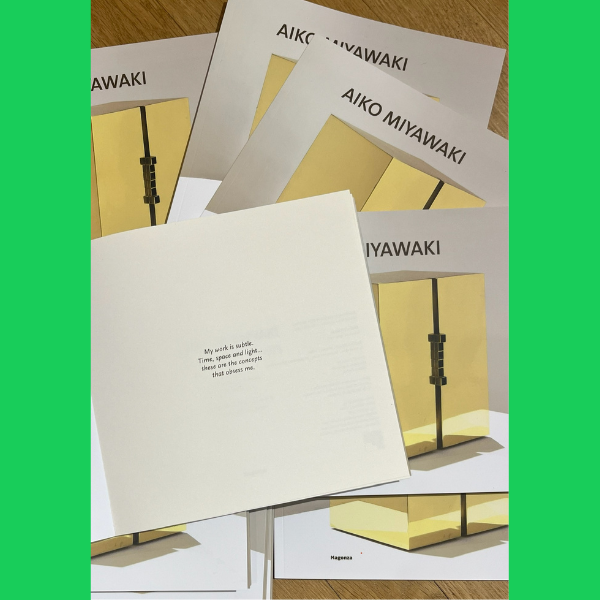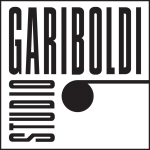NEWS
Bookflow
Fantasmi e Guerrieri
11.03.2025
The book Fantasmi e Guerrieri, Justice and Revenge in Japanese Imagination tells stories of ghosts, recounting the deeds of those who, unable to obtain justice in life, returned after death to punish their oppressors. It also narrates the tales of warriors with epic feats, like in the episode of the forty-seven rōnin.
Thanks to the shadows and lights of Japanese fantasy imagination, the book explores the eternal clash between law and justice, between the strong and the weak, still alive in today’s Japan.
It interests us because the legends of Japan speak of our fears and the “warrior” hidden in each of us.
Press
Studio Gariboldi on Il sole 24 ore
07.03.2025
Contemporary Art Restarts from Art Genève
“The most interesting proposal in the section of 28 ‘Solo shows’ presented by as many galleries comes from Studio Gariboldi of Milan, which brings to the fair the Japanese artist (with some Italian background) Aiko Miyawaki. Her small sculptures and meditative brass assemblages from the 1960s, unique or in limited editions (…)”
By Giovanni Gasparini
continue to read here:
Bookflow
The world of Suzuki Izumi
18.02.2025
A lot is said about Suzuki Izumi, but we are interested in telling the story of the imagination and writing of a young Japanese woman. She will remain young forever, as she left the visible world too soon. But her youth is most evident in her writing, in the worlds she explores, and in the visions that sometimes precede our historical-social moment.
Encountering the stories collected in Noia Terminale, the first volume of a trilogy, is sometimes torment, other times a provocation, and at other times pure alienation.
This book matters to us because disturbance is the foundation of making art, and we’ve chosen to talk about her because she is the third Japanese woman, beyond any stereotype, who, along with Sadayakko and Aiko Miyawaki, forms a deep and original portrait of how women respond to the call of their vocation.
Fiere
Arte Fiera Bologna
05.02.2025
Studio Gariboldi will be present at ARTE FIERA with a selection of artworks. You can find us in our usual spot, spacious and bright, in the Main Section, Pavilion 26, Booth B2.
We will be at the booth from Thursday, February 6 (from 11 AM to 9 PM) to Sunday, February 9 (from 11 AM to 7 PM).
On Friday evening, at 7 PM, we will be heading to the Cinema Modernissimo for the Flash Art Award, together with the Italics consortium, for the Panorama Monferrato project.
Press
Studio Gariboldi on Le quotidien de l’art
30.01.2025
On the occasion of the Art Genève fair (from January 30 to February 2), Le Quotidien de l’Art wrote about us.
Aiko Miyawaki, cuivre d’or
« My work is subtle. Time, space, light… these concepts obsess me, » wrote Aiko Miyawaki (1929-2014) in her 1992 autobiography. A passionate traveler, after World War II, she journeyed across the world to connect different cultural universes. At the crossroads of minimal and conceptual art, which dominated Milan, Paris, and New York in the 1960s, Miyawaki met artists such as Piero Manzoni, Lucio Fontana, Man Ray, Sam Francis, and Jasper Johns. Whether violet, blue, red, or golden, her metal surfaces shine through the refraction of light.
We thank journalist Jordane de Faÿ.
Press
Studio Gariboldi on Artribune
27.01.2025
Aiko Miyawaki is featured on Artribune. The article describes the journey of the exhibition and highlights the most interesting aspects of the Japanese artist’s work.
“Entering Studio Gariboldi gives the impression of stepping into a suspended, golden, hidden place (…). The exhibition thus becomes a moment of silence in a world that moves quickly. The exhibition space is shaped as a place to be traversed. It invites a contemporary flânerie, where the audience tries to decipher the conceptual meaning of the intimacy expressed by the artist.”
Japanese Art in Italy in the 1960s and 1970s
Aiko Miyawaki Catalogue
17.01.2025
The first bilingual catalog, in Italian and English, documenting the work of the Japanese artist Aiko Miyawaki. It includes her fascinating biography, reference texts in foreign languages, details of her solo and group exhibitions, and images of her precious works in brass, composed with Brass Pipes, photographed by Michele Sereni.
The catalog, which features the works exhibited at Studio Gariboldi and traces Miyawaki’s unique artistic journey, is part of a series dedicated to Japanese art in Italy during the 1960s and 1970s, and has received the patronage of the Consulate General of Japan in Milan.
Aiko Miyawaki, Magonza Publisher, Arezzo 2024.
Art and Literature
Carmen Covito
15.01.2025
Our interest in women of the arts also includes the figure of Sadayakko, the Duse of Japan.
Carmen Covito, bestselling author and Japan scholar, will visit the gallery on January 23 at 5:00 PM to tell us about her. She will be in conversation with Elsa Riccadonna, a librarian who is actively involved in promoting reading.The event is part of the series Japanese Art in Italy, 1960s and 1970s, under the patronage of the Consulate General of Japan in Milan.
Limited seating, reservation required: press@studiogariboldi.com










